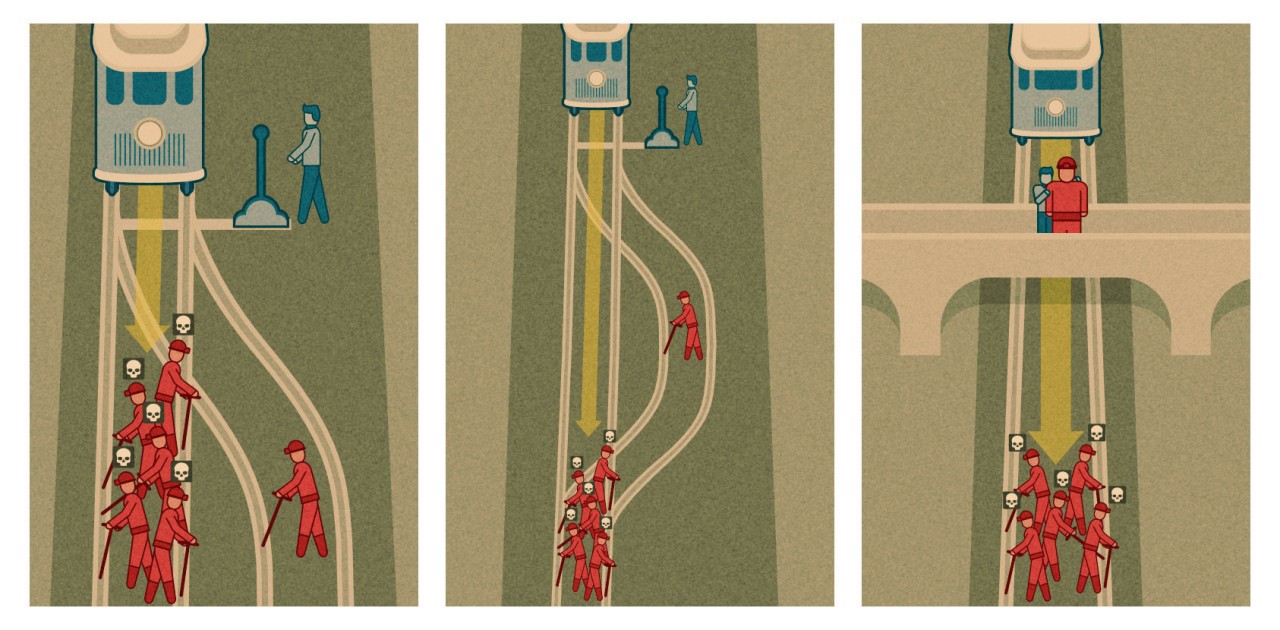Economy of Scale, Crowdsourcing and Moral Dilemmas
Tomasz Bednarz on September 10, 2020
Marc Andreessen (2011) once said “software is eating the world”, and that reflected how technology, and in particular the Internet has transformed the world of business. Being online, allowed companies to benefit from low marginal costs of distribution, and target and serve large markets with really small investments. Straightforward examples include media companies - new platforms enabled their content to be online in no time, and they could suddenly distribute their news to a global audience, without worrying much about traditional distribution costs such as printing, shipping, retailing and delivery. Not to mention Amazon, and consequently fall of Borders who stacked with the old operating model. Another examples are Netflix, Spotify, Disney+ that easily distribute of movies and TV series, on-demand, conveniently with just a push of a button.
The network effect represents a new economic phenomenon, driven by technological innovations (Parker et al, 2016). Compared to supply economies of scale, demand economies of scale take advantage of technological improvements on the demand side. They are driven by efficiencies in social networks, demand aggregation, app development, etc. Metcalf (Wikipedia, 2020) concluded that value of telephone network grows non-linearly as the number of subscribers to network increases, enhancing additional connections between subscribers. Therefore, the rise of the on-demand economy has brought dramatic changes to our society in the last years.
It itself enables new forms of knowledge to be created - for instance, people all over the world can contribute to scientific studies across the fields, either by making scientific observations as amateur scientists or by participating in online experiments as subjects, society on-demand (Peterson 2019, Bednarz 2017).
Also, the infrastructure created as an effect of technological advancement, enabled easy crowdsourcing that could be utilized as Moral Machine (Awad et al, 2020). It is a great example, how platform like that can collect data that could be further used as interdisciplinary framework for the regulation of moral machines. Data collected by Awad and team showed discrepancies between the preferences of the public, the experts, and citizens of different countries. Moral dilemma is very deep, especially when linked to machines and AI making decision, for instance when looking at the Autonomous Vehicles (AVs) - what kind of decisions need to be make if the AV cannot avoid crash, and in each scenario will hit people on the road. Should it protect the people in the car, or people on the street to minimize the impact. And here it comes crowdsourcing to help understanding what is acceptable by the society, and how machines should handle moral dilemmas.
To effectively scale up the impact of crowdsourcing tools, we need to actively work on integrating citizen science and community-based participatory research. Citizen science definitely could inform and influence policies, and improved decision making. Citizen science could also help to fill up the gaps in data. This technology could potentially open new ways of attacking various problems intersecting multiple sectors, ranging from health, education, environment, justice, conservation. To enhance privacy components, blockchain technology could be integrated while building robust Community Citizen Science platforms.
References
-
Andreessen, M. (2011). Why Software Is Eating The World. The Wall Street Journal. Available at https://www.wsj.com/articles/SB10001424053111903480904576512250915629460.
-
Awad, E., Dsouza, S., Bonnefon, JF., Shariff, A., Rahwan, I. (2020). Crowdsourcing Moral Machines. Communications of the ACM, 03/2020, Vol. 63, No. 3. Available at: https://dl.acm.org/doi/10.1145/3339904.
-
Wikipedia (2020). Metcalfe’s law. Available at https://en.wikipedia.org/wiki/Metcalfe%27s_law.
-
Parker, G.G., Van Alstyne, M.W., Chaudary, S.P. (2016). Platform Revolution: How Networked Markets are Transforming the Economy and How to Make Them Work for You. W.W.Norton & Company. Available at https://www.amazon.com.au/Platform-Revolution-Networked-Transforming-Economy/dp/0393249131.
-
World Economic Forum (2020) Citizen Science can help solve our data crisis. Website: https://www.weforum.org/agenda/2019/03/citizen-science-can-help-solve-our-data-crisis.
-
Bednarz, T., Kim, J., Brown, R., …, Vercelloni, J. (2017) Virtual Reality for Conservation. Web3D, Anahaim. Link: https://www.researchgate.net/publication/305421414_Virtual_reality_for_conservation.
-
Peterson, E., …, Bednarz, T., Mengersen, K. (2019) Monitoring through many eyes: integrating datasets to improve monitoring of the Great Barrier Reef. Link: https://doi.org/10.1016/j.envsoft.2019.104557.